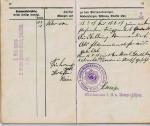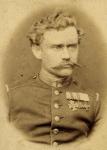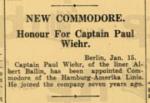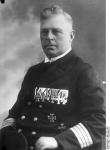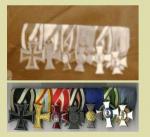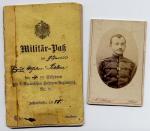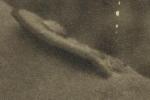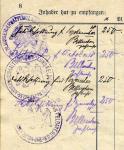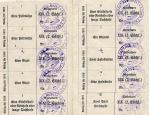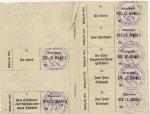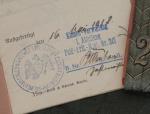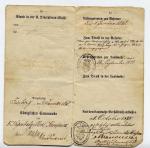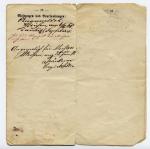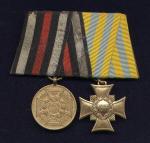d
Militair-Pass des Jägers,
Reservist Friedrich Otto Schneider
1.Jäger Bataillon, 3. Compagnie “Kronprinz” Nr.12
Friedrich Otto Schneider, a weaver by trade, was born on July 21st, 1843 in Meissen (Kingdom of Saxony). He joined the Royal Saxon Army on January 1st, 1865 as a rifleman in the the 3rd coy of the 1st Saxon Jäger-Bataillon. The 1stSaxon Jäger-Bataillon “Kronprinz” was garrisoned in the city of Zwickau (later 1867 Freiberg).
In 1866, at the age of 23, Rifleman Schneider fought in the so called “Brother War” against Prussia.
He took part in the battles of Jicin (Gitchin) and Königgrätz.
He was awarded the Royal Saxon commemorative cross of the 1866 campaign in Austria.
Saxony, Bavaria and Austria lost the war against Prussia. Saxony along with the other German Kingdoms joined the new German federation under Prussian leadership.
In 1870, after failed state diplomacy, France declared war on Prussia.
Schneider, since January 1868 in the Army Reserve, joined again his old Jäger battalion to fight in a new war, now on the side of Prussia, against France. This time he served in the 1st company of the Battalion.
The entries in his passport read:
1870, Feldzug in Frankreich (Campaign in France)
August 18, 1870 battle at St. Privat
September 1, 1870 battle at Sedan
At Sedan Schneider was wounded in his left foot.
For his part in the Franco-Prussian war Schneider received the Prussian commemorative medal of 1870/71.
On September 29, 1871 he was transferred into the Landwehr and in October 1875 he received his honourable Army discharge. Friedrich Otto Schneider, a veteran of two wars, started a family in his hometown of Meissen and lived a quiet uneventful life until his death.
The Military passport is signed in 1868 by the commander of the 1st Saxon Jäger, Oberstleutnant von Hausen (Ludwig Moritz Lothar Freiherr von Hausen).
The entry from 1875 is signed by Oberstleutnant Carl Wolfgang von Mandelsloh.
The humble medal bar of Friedrich Otto Schneider





